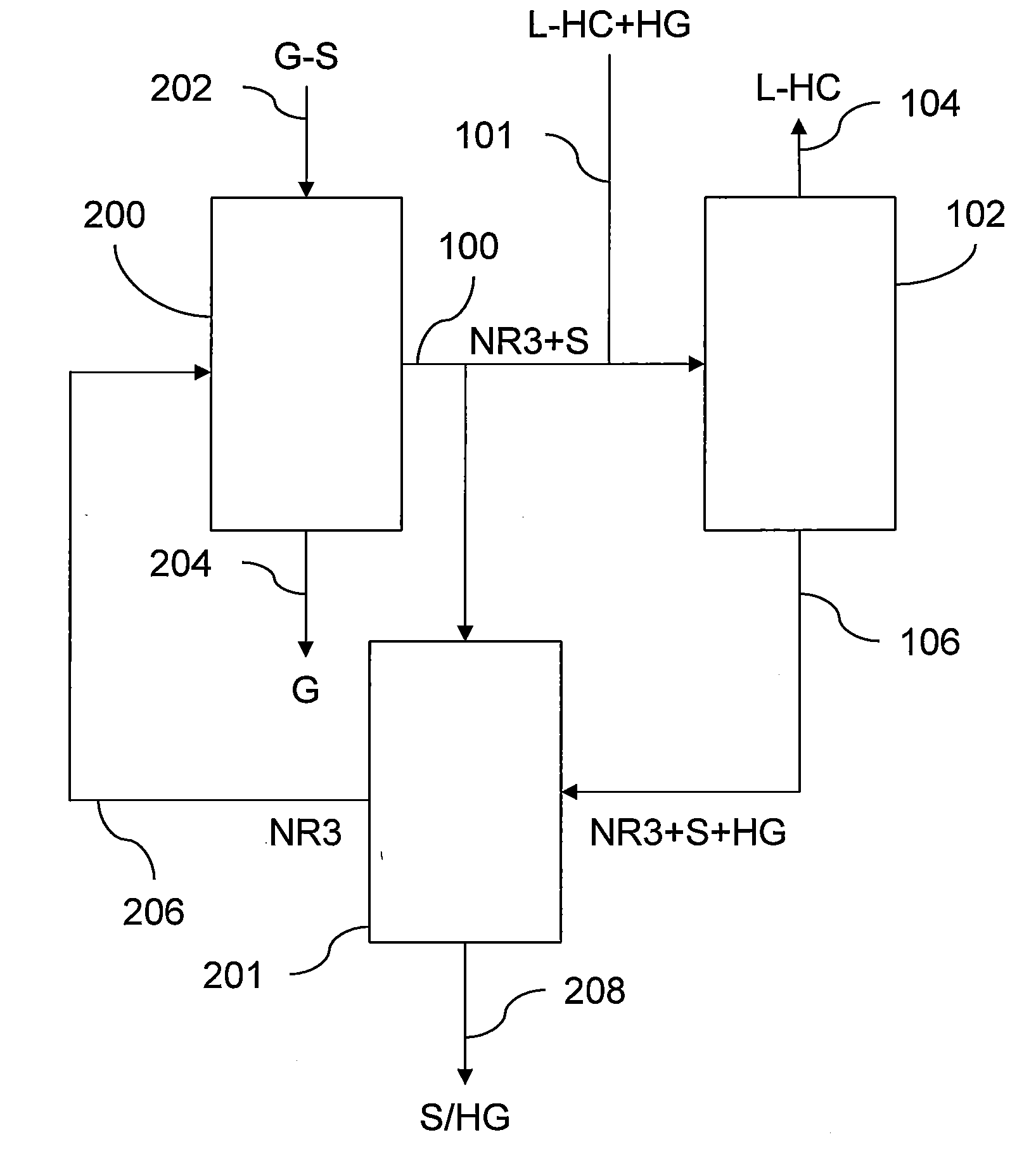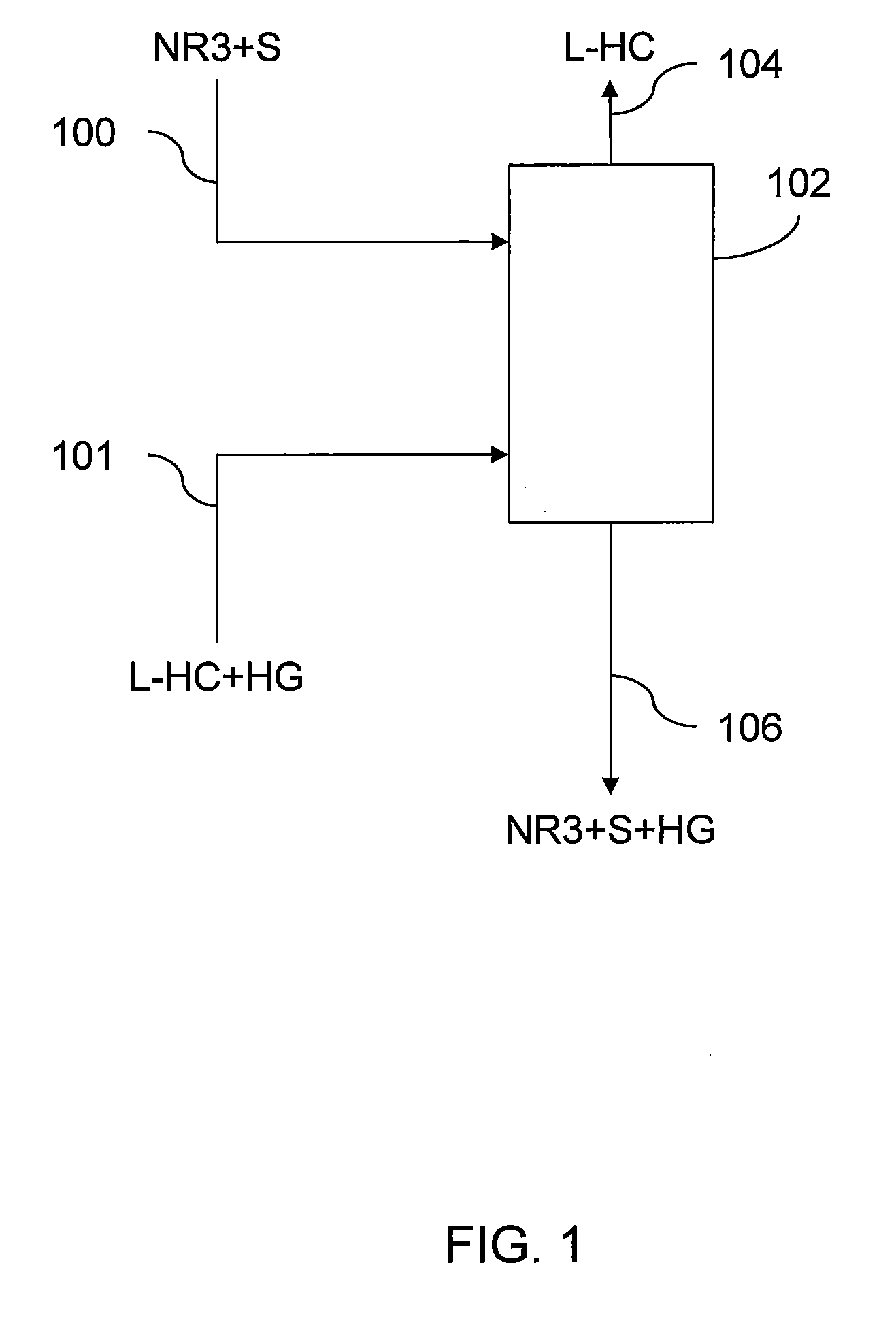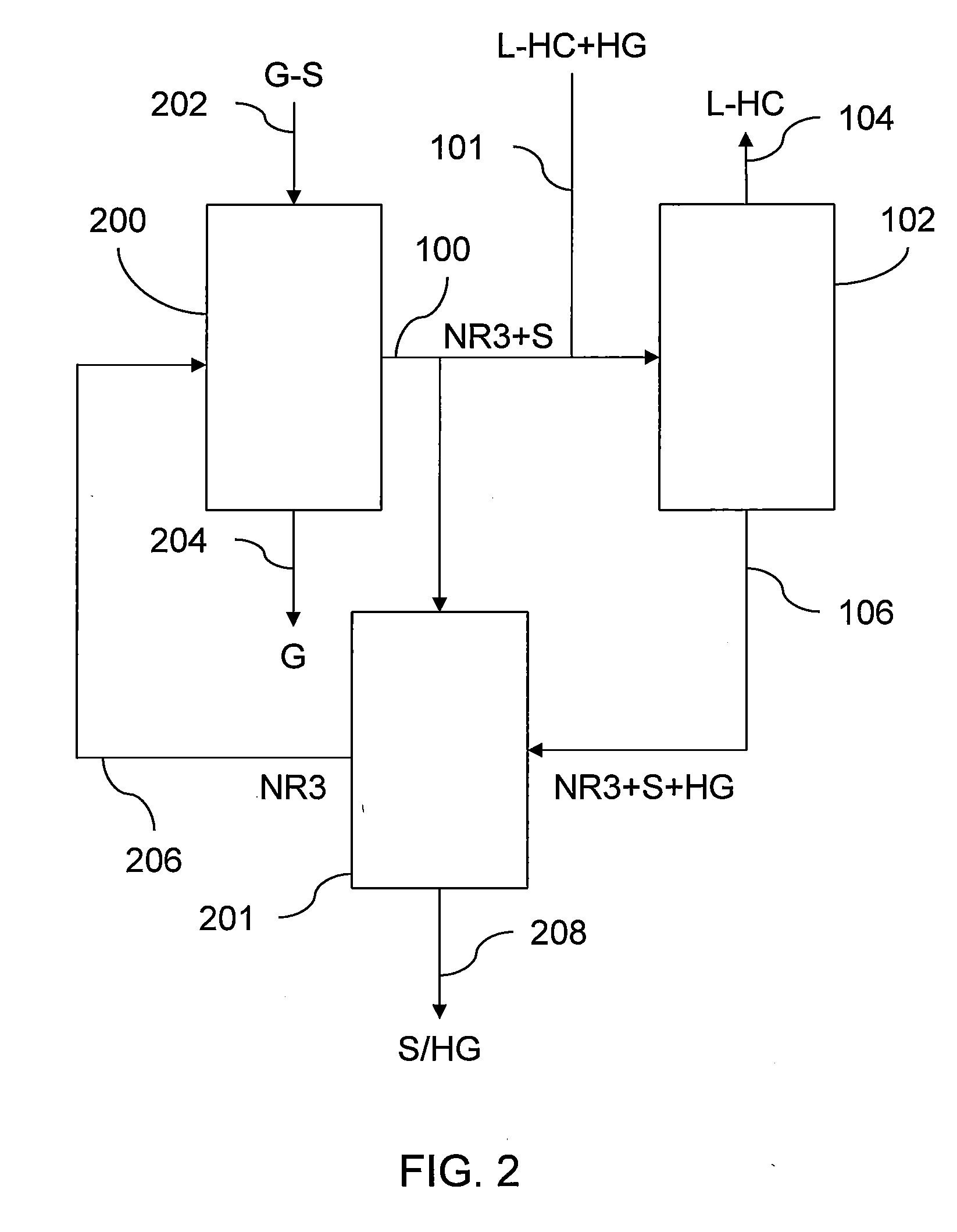Mercury removal with amine sorbents
a technology of amine sorbent and mercury, which is applied in the field of methods and systems for removing mercury from fluids, can solve problems such as health and environmental problems, removal of mercury, and hydrocarbons affecting downstream processing units, and can cause clogging and clogging
- Summary
- Abstract
- Description
- Claims
- Application Information
AI Technical Summary
Problems solved by technology
Method used
Image
Examples
examples
[0027]Bottle tests were performed with about 3.0 grams of either a decane or light sweet crude oil mixed in contact with about 0.3 grams of diethanol amine (DEA) that had absorbed hydrogen sulfide. After mixing, settling permitted phase separation. Mercury concentrations were measured in the decane or the light sweet crude oil before the mixing and then upon collection of the decane or the light sweet crude oil that were isolated following the phase separation. A percentage of mercury removed was determined based on the mercury concentrations that were measured. Temperature of the mixing and concentration of the hydrogen sulfide that had been absorbed by the DEA were varied and influenced results for the percentage of mercury removed. Tables 1 and 2 show the results obtained with Table 1 corresponding to the bottle tests performed to remove the mercury from the decane using the DEA that had absorbed about 8500 parts per million (ppm) of the hydrogen sulfide and Table 2 being based o...
PUM
| Property | Measurement | Unit |
|---|---|---|
| temperature | aaaaa | aaaaa |
| temperature | aaaaa | aaaaa |
| boiling point | aaaaa | aaaaa |
Abstract
Description
Claims
Application Information
 Login to View More
Login to View More - R&D
- Intellectual Property
- Life Sciences
- Materials
- Tech Scout
- Unparalleled Data Quality
- Higher Quality Content
- 60% Fewer Hallucinations
Browse by: Latest US Patents, China's latest patents, Technical Efficacy Thesaurus, Application Domain, Technology Topic, Popular Technical Reports.
© 2025 PatSnap. All rights reserved.Legal|Privacy policy|Modern Slavery Act Transparency Statement|Sitemap|About US| Contact US: help@patsnap.com



